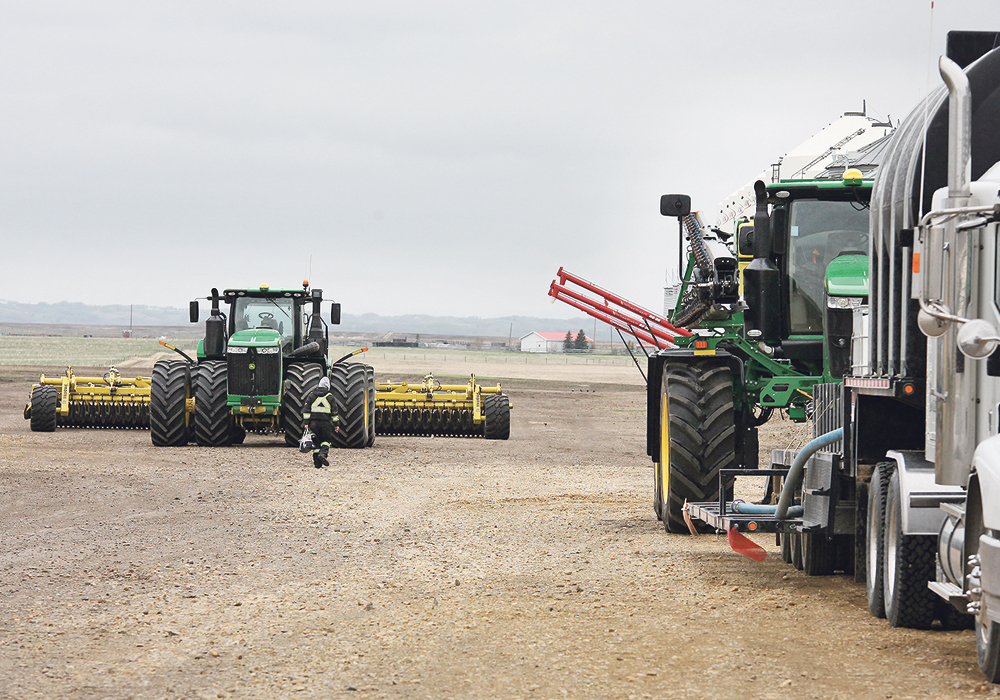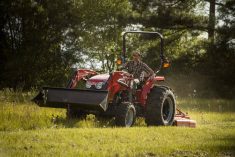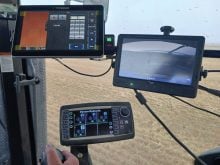A cold dry season turns wetter, and wetter, and wetter, slowing application processes, eventually requiring aerial
“Spraying? It was long. It was drawn-out,” said Larry Woolliams.
The Airdrie, Alta., farmer started the year with late and cold conditions, a bit short of moisture and staring down 9,000 acres of land to crop to seed this spring.
With a new sprayer this year, he was hoping for the best, “but you always start up something new with a few questions in the back of your mind.”
All year The Western Producer is following the progress of this Calgary-area farm, as it integrates some of the latest in field technology to obtain greater sustainability. Going paperless last year was just one step for the operation in an efficiency workflow that the Alberta farm hopes will yield savings in inputs and labour, along with lowering its overall environmental footprint.
Read Also

Growing garlic by the thousands in Manitoba
Grower holds a planting party day every fall as a crowd gathers to help put 28,000 plants, and sometimes more, into theground
Related stories:
Using software of his own company’s design, Crop Boss, Woolliams has been able to map out the potential efficiency of a wider sprayer with improved overlap and added turn compensation control.
“Up here we don’t have a lot of nice square edges and flat running in the fields. We knew there was potential to find some savings and improve the agronomy,” he said.
“But until you put it to work it’s just a well thought out plan.”
Woolliams got a new 4045 John Deere sprayer with the ExactApply pulse width modulation nozzle control and 132-foot, carbon fibre booms this spring. He said he knew he wanted a wider machine, that might let him apply more and potentially slow down in the field, while maintaining productivity.
“I really wanted to eliminate the bronzing in the corners and from overlaps from too much herbicide.
“It seems to have done it. It’s paying,” he said about the strategy of moving to a single sprayer with improved capacity.
“We’re putting the right amount of product down, just like we planned,” said Woolliams, who moved his chemical injection unit to the new machine.
Most of the farm has received about 24 inches of moisture this season, including an early-seeding storm that piled on a wet blanket of snow.
“I was running (the sprayer) one day. Long day, six in the morning, finished up 10 at night. Refilled (the spray tender) water twice and the Roundup once. I was loading on my own, maybe a half-hour for that (each time) … 1,245 acres I finished up at. Not shorting the water, it was at 10 gallons (per acre) at 10 and half miles an hour. Pretty pleased with that,” he said.
“We’ve put on 25,000 to 30,000 acres so far this year with the new sprayer. Would be more but it just got too wet. So, we called in a plane for some fungicide,” said Woolliams.
Despite the persistent rain Woolliams’ crops have flourished this season.
“Really large peas. Eye-level and six to eight per pod. Canola up to the chin. It’s started to slump down a bit, deeply podded. Wheat and barley look good too. Just running a bit late, so we will need a little more time this season to finish it all,” he said.

















